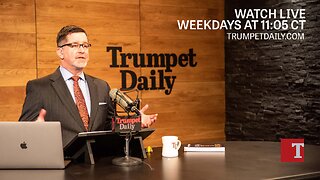Premium Only Content

No one is saving you Canada!, you can't vote your way out of this, wake up it's an economic takeover
Money laundering has emerged as a significant issue in Canada over the past decade, with far-reaching consequences for various sectors, notably the real estate market. This illicit practice involves disguising the origins of illegally obtained funds, allowing criminals to integrate "dirty" money into the legitimate economy. This essay delves into how money laundering from 2010 has adversely affected housing affordability in Canada, examining key factors, policy responses, and potential solutions.
I. The Rise of Money Laundering:
1.1 Background:
Money laundering in Canada gained prominence around 2010 due to various factors, including lax regulations, weak enforcement, and global economic instability. Real estate became an attractive avenue for criminals seeking to legitimize their ill-gotten gains.
1.2 Foreign Investment and Speculation:
Foreign investors, seeking to park their wealth in stable economies, saw Canada, particularly its major cities like Vancouver and Toronto, as prime targets. The influx of foreign capital led to skyrocketing property prices, making homeownership increasingly unattainable for average Canadians.
II. Distorted Market Dynamics:
2.1 Demand-Supply Imbalance:
As money laundering activities surged, the demand for housing far exceeded the available supply. This created an artificial scarcity, driving prices even higher.
2.2 Speculative Bubbles:
The injection of illicit funds into the real estate market inflated property values, creating speculative bubbles. This phenomenon was exacerbated by a lack of transparency and regulatory oversight.
III. Erosion of Affordability:
3.1 Escalating Prices:
Between 2010 and 2021, average home prices in major Canadian cities witnessed unprecedented growth. This surge in prices placed homeownership out of reach for a significant portion of the population, especially young and first-time buyers.
3.2 Disproportionate Impact on Vulnerable Communities:
The consequences of this affordability crisis were most pronounced among low-income households, immigrants, and marginalized communities. They faced eviction, displacement, and increasing homelessness rates.
IV. Inadequate Regulatory Framework:
4.1 Regulatory Gaps:
Canada's regulatory framework was ill-equipped to tackle the complexity of money laundering in real estate. Gaps in reporting requirements, beneficial ownership transparency, and enforcement mechanisms allowed illicit funds to flow unchecked.
4.2 Limited Due Diligence:
Real estate transactions often lacked rigorous due diligence processes, enabling the covert integration of illicit funds. Weaknesses in the anti-money laundering (AML) regime provided loopholes for criminals to exploit.
V. Policy Responses and Reforms:
5.1 Strengthening AML Regulations:
Recognizing the urgency of the issue, Canadian authorities implemented a series of reforms to enhance AML regulations. These measures included stricter reporting requirements, improved beneficial ownership disclosure, and increased penalties for non-compliance.
5.2 Taxation Measures:
To deter speculative investment and curb money laundering, the Canadian government introduced various taxation measures, such as foreign buyer taxes, vacant home taxes, and capital gains taxes on real estate transactions.
VI. International Cooperation:
6.1 Information Sharing and Collaboration:
Given the transnational nature of money laundering, Canada sought greater cooperation with international partners. Sharing intelligence and collaborating on investigations became crucial in tracking and combating illicit financial flows.
6.2 Mutual Legal Assistance Treaties (MLATs):
Canada entered into MLATs with other countries, facilitating the exchange of evidence and legal assistance in cross-border money laundering cases. These agreements strengthened the country's ability to pursue offenders beyond its borders.
VII. Long-term Solutions and Outlook:
7.1 Strengthening Beneficial Ownership Transparency:
Ensuring comprehensive disclosure of beneficial ownership is crucial in preventing money laundering through real estate. Implementing a centralized registry of property ownership can serve as a potent tool in this regard.
7.2 Promoting Affordable Housing Initiatives:
To counteract the effects of money laundering on housing affordability, governments should invest in affordable housing initiatives, such as subsidized housing programs, rent controls, and incentives for affordable housing development.
Conclusion:
The influx of illicit funds through money laundering from 2010 onwards had a detrimental impact on housing affordability reclaim its housing market and ensure that it serves the interests of all its citizens.
No one is saving you Canada! you can't vote your way out of this, wake up it's an economic takeover
#mikemartins #mikeinthenight
-
 15:52
15:52
Mike Martins Channel
24 days ago $0.12 earnedBill C9
2092 -
 UPCOMING
UPCOMING
The Shannon Joy Show
45 minutes agoRFK & GOP Fast Track A Biometric Data Heist. Has MAHA Been Hijacked By Tech Bros? W/ Aaron Day
5 -
 UPCOMING
UPCOMING
Daniel Davis Deep Dive
3 hours agoCol Doug Macgregor LIVE Today 12:00p est
30 -
 UPCOMING
UPCOMING
The Drew Allen Show on DailyClout
59 minutes ago“No Kings, No Crowds, No Credibility: The Week the Left Imploded.”
17 -
 UPCOMING
UPCOMING
Trumpet Daily
11 minutes agoTrumpet Daily LIVE | Oct. 21, 2025
-

Badlands Media
9 hours agoBadlands Daily: October 21, 2025
33.5K8 -
 LIVE
LIVE
Viss
1 hour ago🔴LIVE - Learning To Dominate Battlefield 6 Preparing For Battle Royale!
67 watching -
 16:23
16:23
It’s the Final Round
13 hours ago $0.20 earned💰NBA Best Bets🔥Player Prop Picks, Parlays, Predictions FREE Tuesday Today October 21st 10/21
5.32K1 -
 LIVE
LIVE
GloryJean
1 hour agoGetting BF6 Battle Royale Ready!
31 watching -
 LIVE
LIVE
The Big Mig™
3 hours agoBusted, Christopher Wray & Jack Dorsey Seditious Conspiracy
5,098 watching